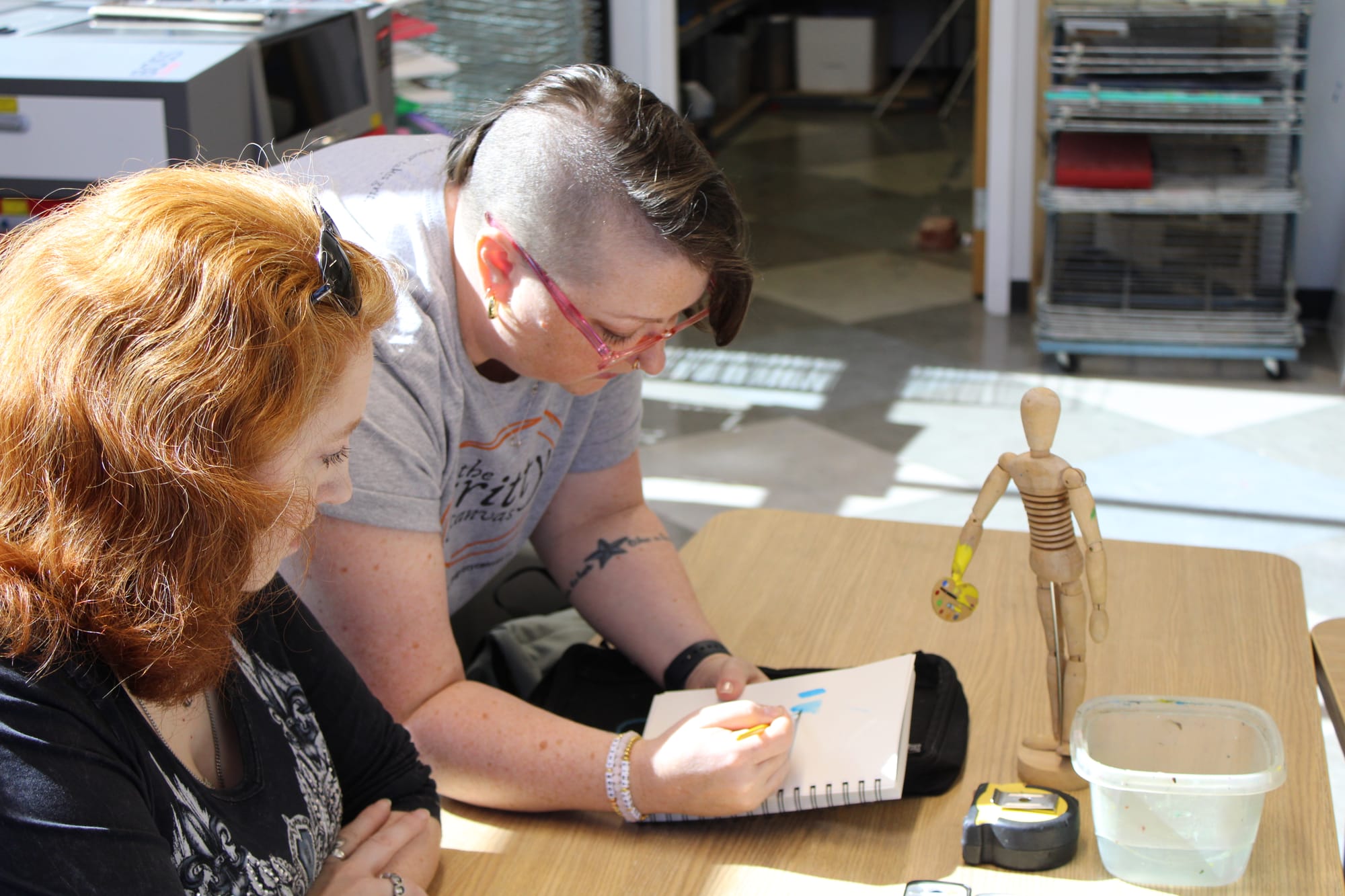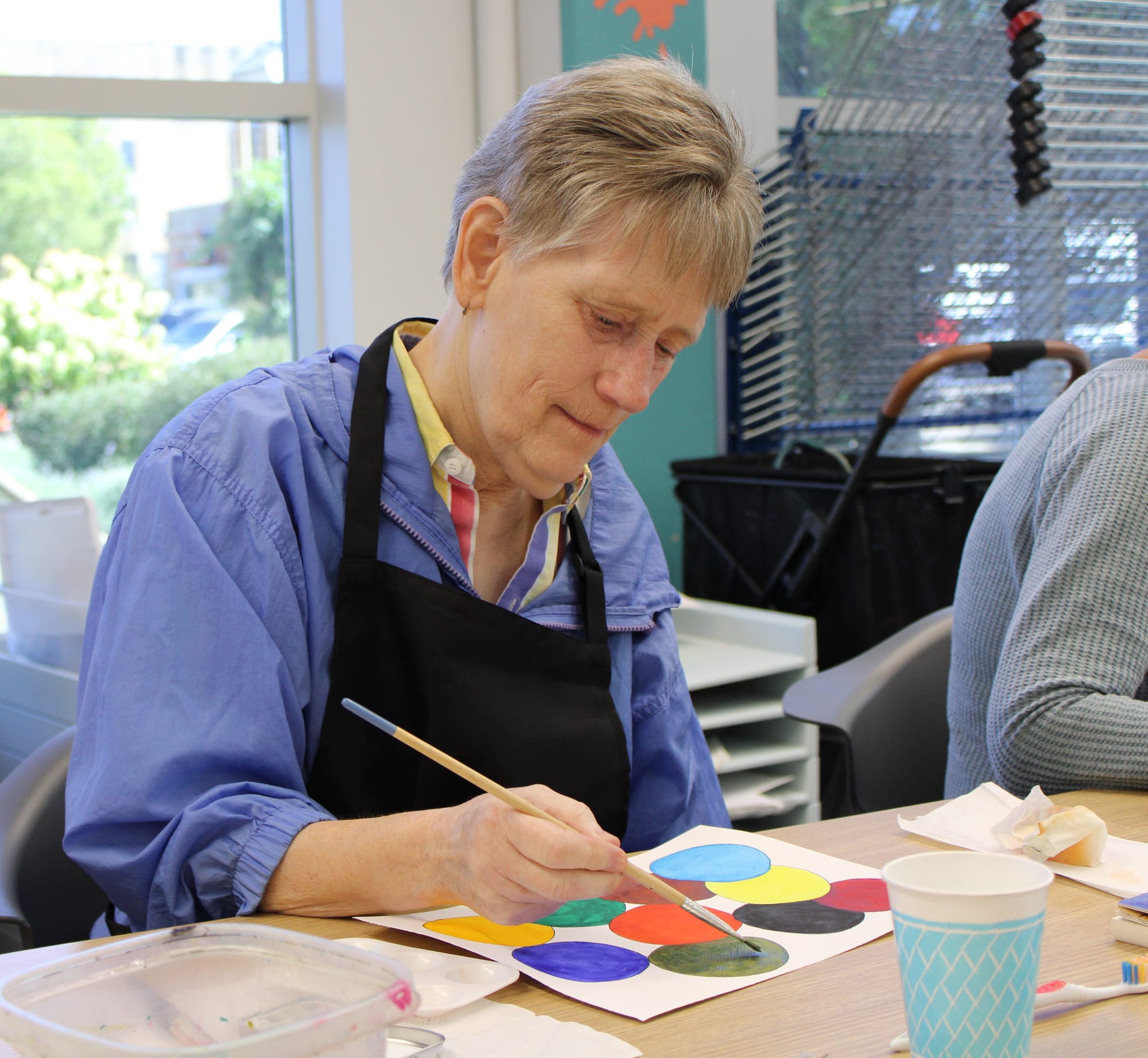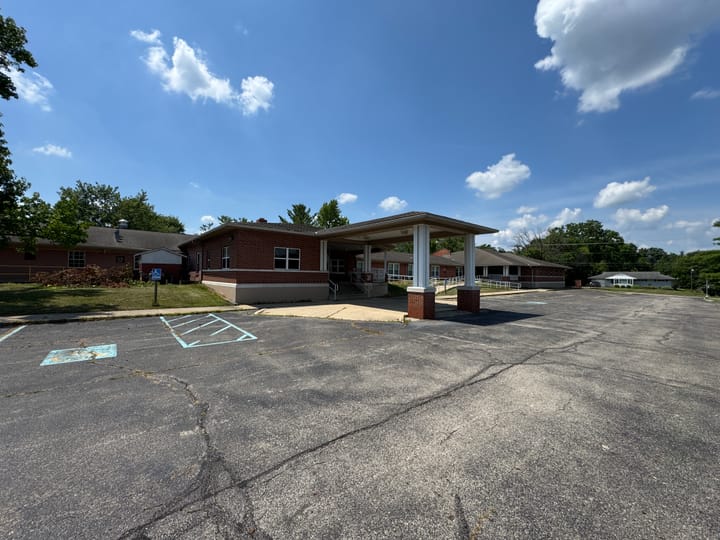The Gritty Canvas, a new nonprofit founded by a Miami University professor, brings cancer patients like Barb Michael together through art. The environment is free from pressure on participants to talk about their diagnoses.
It’s 10 a.m on Saturday morning, and Janice Hudson is ready to make some art.
Normally, the Fitton Center in Hamilton is closed on Saturdays, but they unlock it in the morning just for Hudson and her group, the Gritty Canvas. Now, Hudson’s leading 10 or so participants in the final project for the nonprofit organization’s second six-week term.
Each of the attendees, all women, has their own watercolor palette and paper. As Hudson describes to them what they’ll be painting — colorful abstract pieces from traced objects, they start searching through the cabinets for items to base their pieces on. Some pick up paint cups and tupperware bins. A couple choose scissors. Others go for Elmer’s glue, a stirring spoon and even a measuring tape.
When the works are done, Hudson says, they’ll go to hang in the hallways of the Kettering Health Hamilton Cancer Center, where she and many of the members of the Gritty Canvas have spent countless hours in treatment for various types of cancer.
Hudson, a visiting assistant professor of geography at Miami University, was diagnosed with a rare form of breast cancer in 2022. She was 37 at the time. Hudson felt like there weren’t enough groups where cancer patients could talk about things other than their diagnoses, so she formed her own.
“I really didn’t want to talk to anyone about my cancer or my treatment, and I didn’t want to be a part of a Facebook group that was exclusively about cancer, because a lot of times when you’re in those groups, it can be really dark,” Hudson said. “And so I was hoping to find something that was a bit more me, if that makes sense.”

The Gritty Canvas, a 501(c)(3) nonprofit organization, provides a space for cancer patients, survivors and caregivers to meet for a couple hours each week to chat and make art together. So far, Hudson has led two six-week sessions, both completely free to participants. The first had a half dozen people, while the second doubled that number. Not everyone can show up every week, though, Hudson said.
Why the Gritty Canvas? During Hudson’s treatment, she remembers everyone telling her how brave she was and calling her a warrior. Those words didn’t seem to fit her situation, though.
“I remember going through treatment thinking, ‘I don’t feel like any of those things,’” Hudson said. I don’t feel brave. I don’t feel like a warrior — I feel like crap. And so for me, [the name] was a way for me to repackage that as, ‘It just takes grit.’”
The class structure is informal. No one, including Hudson, is a professional artist, but the quality isn’t the point. It’s about the conversation and the process.

At this session, everyone talks about their allergies and the upcoming flu season, what they need to do about the next COVID-19 booster shot, how cool the bathrooms are at Fitton (consensus: very cool). Hudson ends up sharing an anecdote about her experience in Japan at the start of the pandemic as she offers tips to the other artists.
Barb Michael, a current cancer patient, started attending the Gritty Canvas meetings during the first session in June and July. She got a card advertising the program in the oncology wing of the hospital and decided to give it a chance, even though she wasn’t sure what to expect.
“The first time, it was just very comfortable,” Michael said. “I didn’t feel like I was being hounded to talk about my situation … It’s just a safe place, and I really miss it when I’m not here.”
Bootsie Huesing learned about the organization from Michael, who encouraged her to attend. She was worried at first because her only previous experience with art was in school, but that hasn’t been a barrier.
“I’m not an artist. I can’t draw,” Huesing said. “But it doesn’t matter. You just put it down, and then you look at other people and you get ideas.”




Bootsie Huesing (top left), Barb Michael (top right) and Julie McIlvenna (bottom right) work on their final projects for the Gritty Canvas' current session. Photos by Sean Scott
Everyone who signs up for the Gritty Canvas gets their own palette and sketchbook to take home. Huesing has fixed up some of her earlier works at home, but Michael hasn’t used hers much. For her, the artwork is too personal, and she isn’t comfortable sharing it with her family.
Some caregivers from Kettering also take part in the Saturday sessions. Julie McIlvenna, a nurse at Kettering, has been a major cheerleader for the program, Hudson said. She’s there most Saturdays, paintbrush in hand, right alongside the people she’s walked through treatment.
“I didn’t know if it would go anywhere,” McIlvenna said about the process of getting the hospital on board. “But thankfully, my leadership was excited about it.” Both McIlvenna and Hudson agreed that it was important to have the sessions at a location other than the hospital.
“It’s a closer-knit group that we can be able to support,” said Jennifer Sergent, who works in radiation. “I’m glad to be able to be a part of that, to help support them.”
When the two hours are up, everyone walks to the front of the room and throws their art down on the ground. It’s a tradition every week, Hudson says, both so they can see one another’s work and so she can get pictures. And of course, everyone is quick with the compliments, too.
Hudson is preparing for her next six-week session of classes, which is set to run Oct. 5 through Nov. 9. Anyone interested in joining can sign up on the Fitton Center's website, and the Gritty Canvas has information about making donations on its website.





